Apple 15-inch MacBook Pro (Late 2011) Review
by Anand Lal Shimpi on November 17, 2011 5:10 PM EST- Posted in
- Mac
- Apple
- Intel
- MacBook Pro
- Sandy Bridge
- Laptops
The early 2011 MacBook Pro is honestly Apple's best effort to date. Only using quad-core CPUs on the 15 and 17-inch models, and offering an optional Thunderbolt Display that can act as a modern day dock makes this platform, particularly the 15-inch model, the perfect candidate for users who want the power and flexibility of a desktop with the portability of a notebook. Apple gets the mobile revolution in more ways than one, and its MacBook Pro/Thunderbolt Display combo is the perfect example of that.
It's this very combination that I've been using, partially since the introduction of the Sandy Bridge MacBook Pro earlier this year (the Thunderbolt Display didn't arrive until later). I've been quite happy with the setup. With the exception of lackluster Quick Sync adoption by Apple and obviously limited GPU options, I have very few major complaints.
Late last month, Apple updated its 2011 MacBook Pro lineup - likely the first and last update before Apple adopts Ivy Bridge in Q2 next year. We got our hands on the new base 15-inch MacBook Pro configuration, which received one of the more substantial upgrades over the previous model. As this is still a fairly minor upgrade, be sure to read our original review of the platform for a deeper dive into all of the aspects of the system.
| Late 2011 MacBook Pro Lineup | |||||||
| 13-inch (low end) | 13-inch (high end) | 15-inch (low end) | 15-inch (high end) | 17-inch | |||
| Dimensions |
0.95 H x 12.78 W x 8.94 D
|
0.95 H x 14.35 W x 9.82 D
|
0.98 H x 15.47 W x 10.51 D
|
||||
| Weight |
4.5 lbs (2.04 kg)
|
5.6 lbs (2.54 kg)
|
6.6 lbs (2.99 kg)
|
||||
| CPU |
2.4 GHz dual-core Core i5
|
2.8 GHz dual-core Core i7
|
2.2 GHz quad-core Core i7
|
2.4 GHz quad-core Core i7
|
2.4 GHz quad-core Core i7
|
||
| GPU |
Intel HD 3000 Graphics
|
Intel HD 3000 + AMD Radeon HD 6750M (512MB)
|
Intel HD 3000 + AMD Radeon HD 6770M (1GB)
|
Intel HD 3000 + AMD Radeon HD 6770M (1GB)
|
|||
| RAM |
4GB 1333MHz DDR3 (8GB max)
|
||||||
| HDD |
500GB 5400 RPM
|
750GB 5400 RPM
|
500GB 5400 RPM
|
750GB 5400 RPM
|
750GB 5400 RPM
|
||
| Display Resolution |
1280x800
|
1440x900 (1680x1050 optional)
|
1920x1200
|
||||
| Ports |
Gigabit LAN, Firewire 800, Thunderbolt, 2x USB 2.0, SDHC slot, combined audio in/out jack
|
Gigabit LAN, Firewire 800, Thunderbolt, 2x USB 2.0, SDHC slot, separate audio in/out jacks
|
Gigabit LAN, Firewire 800, Thunderbolt, 3x USB 2.0, separate audio in/out jacks, ExpressCard 34 slot
|
||||
| Battery Capacity |
63.5Wh
|
77.5Wh
|
95Wh
|
||||
| Price | $1,199 | $1,499 | $1,799 | $2,199 | $2,499 | ||
Silicon Updates
The focus of Apple's late 2011 update, despite rumors to the contrary, was on the silicon inside the platform. As the Mac business is a relatively mature one, we can expect a slower pace of chassis and design upgrades compared to the iPhone/iPad businesses for example.
We'll start with the CPU, the lesser updated chip in the new MacBook Pro. System pricing hasn't changed, but CPU speeds have all gone up.
Just as before the 15-inch MacBook Pro is only available with a quad-core Intel Core i7 CPU (codename Sandy Bridge). The $1799 configuration goes from a 2.0GHz i7 to a 2.2GHz model. Be warned, this isn't the same 2.2GHz model that was available as an upgrade earlier this year though.
A quick run of Cinebench points out that the 2.2GHz i7 in our system may be a Core i7 2675QM. The original 2.2GHz option was a Core i7 2720QM. What's the difference between the two? Not a whole lot.

Max turbo is down a bit on the 2675QM. It was 3.3GHz on the 2720, but now it's 3.1GHz. The two, three and four core turbo limits are also down by 200MHz compared to what they were in early 2011. If you didn't have a 2.2GHz early 2011 15-inch MacBook Pro, these differences likely don't mean anything. If for whatever reason you're comparing to an early 2011 2.2GHz model, you'll see a slight regression in CPU bound performance.
The on-die GPU is a hair slower as well. You still get an Intel HD 3000 GPU (12 EUs) but the max turbo moves from 1.3GHz down to 1.2GHz. Or if you prefer another way of looking at it, the 2675QM is the same as the 2670QM, except the GPU is able to clock 100MHz higher (1.2GHz vs. 1.1GHz).
| Apple 15-inch Late 2011 MacBook Pro CPU Comparison | |||||
| 2.2GHz quad-core | 2.4GHz quad-core | 2.5GHz quad-core | |||
| Intel Model | Core i7-2675QM | Intel Core i7-2760QM | Intel Core i7-2860QM | ||
| Base Clock Speed | 2.2GHz | 2.4GHz | 2.4GHz | ||
| Max SC Turbo | 3.1GHz | 3.5GHz | 3.6GHz | ||
| Max DC Turbo | 3.0GHz | 3.4GHz | 3.5GHz | ||
| Max QC Turbo | 2.8GHz | 3.2GHz | 3.3GHz | ||
| L3 Cache | 6MB | 6MB | 8MB | ||
| AES-NI | Yes | Yes | Yes | ||
| VT-x | Yes | Yes | Yes | ||
| VT-d | No | Yes | Yes | ||
| TDP | 45W | 45W | 45W | ||
The upgraded 15-inch configuration comes with an all new Sandy Bridge SKU: the Core i7 2760QM running at 2.4GHz. Unlike the old 2.3GHz part, the 2760QM still only has a 6MB L3 cache. You do get higher base and turbo speeds. There's also a new 2.5GHz quad-core option that can run at up to 3.6GHz with a single core active. That's an absolutely insane frequency for a notebook. Notebook-as-a-desktop users will appreciate the flexibility here.
All of the new CPUs support AES-NI, although once again Apple is the victim of Intel's silly segmentation. The entry level 2.2GHz part does not support VT-d (Virtualization Technology for Directed I/O), which allows virtual machines to have direct access to I/O devices (including PCIe GPUs). I'm not sure if any current virtualization software for OS X supports VT-d, but the absence of the feature is important to note nonetheless. The rest of the CPU lineup supports VT-d.

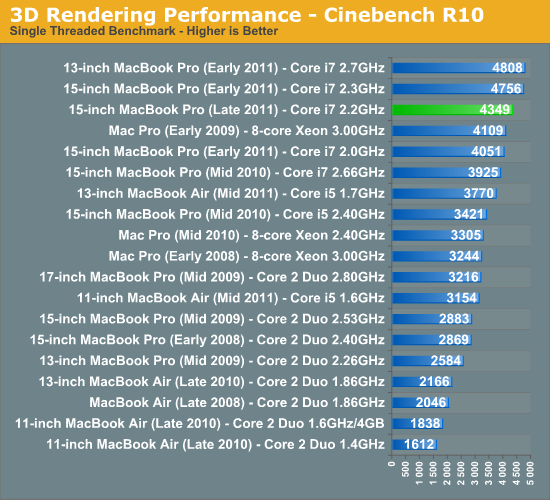
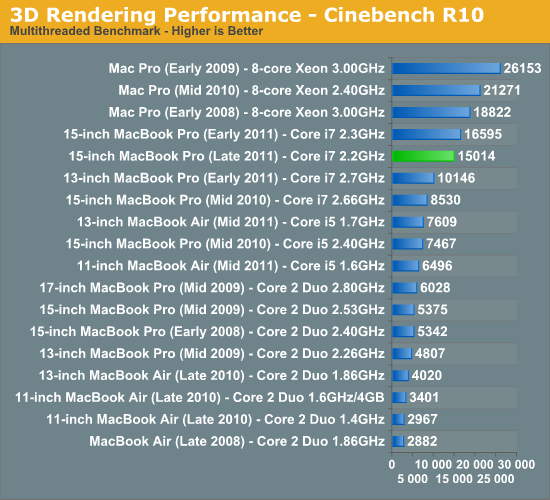
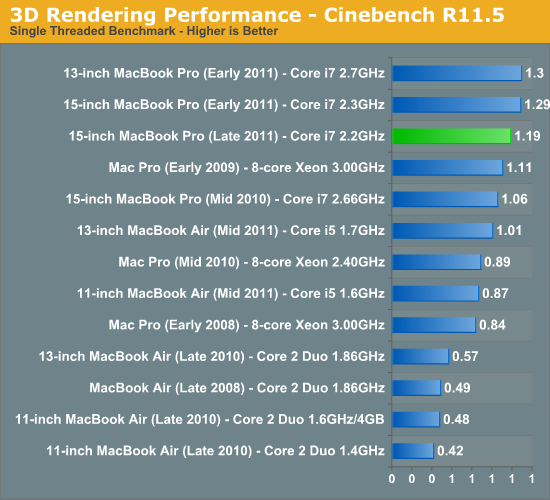
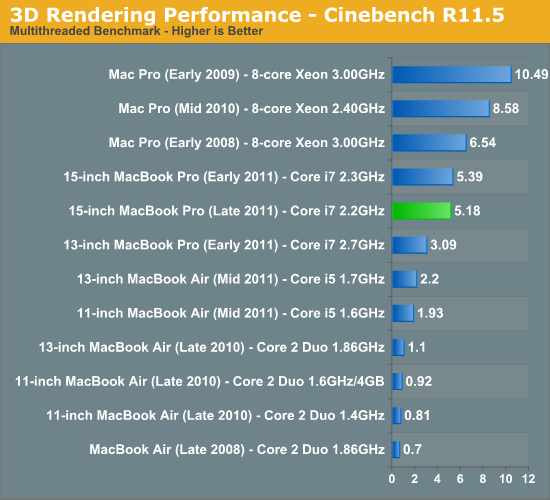
Battery Life
TDPs haven't changed, nor has the MacBook Pro's battery capacity, so overall battery life should (and does) remain relatively unchanged from the early 2011 models. Worst case scenario you can expect around 2.5 hours of battery life under load. With moderate load expect 4 - 5 hours of use on a single charge. And under a very light load you can easily exceed 7 hours.
I ran our normal battery life suite, however Lion has made some of the numbers a little less comparable than I would've liked. The lighter use cases (e.g. our web browsing tests) see a drop compared to our older Snow Leopard results. Under full load the new platform, even while running Lion, actually did a bit better than its predecessor. All in all I'd say the new MacBook Pro is pretty consistent with its predecessor - Lion just threw a wrench in a lot of our battery life comparisons so we'll be starting over from scratch in building our new database.
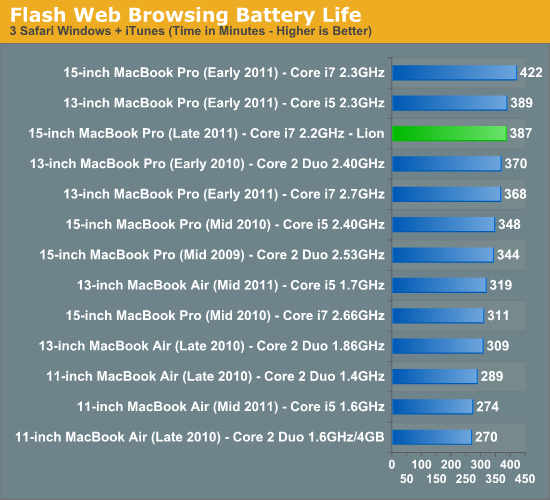
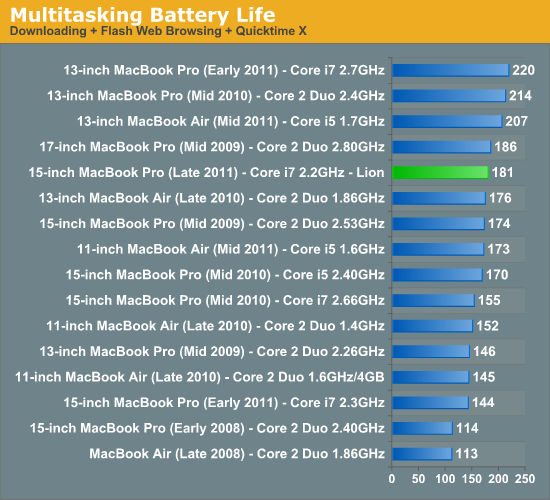


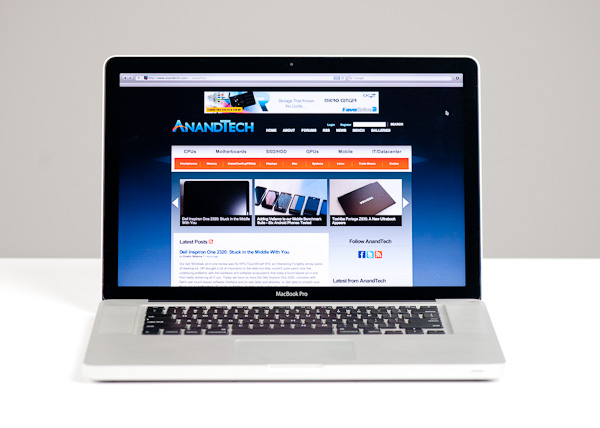
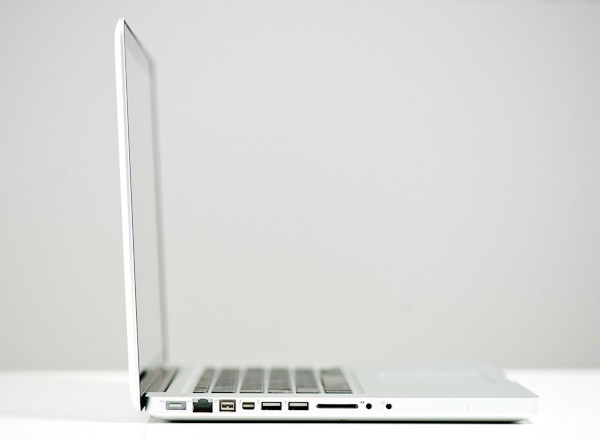
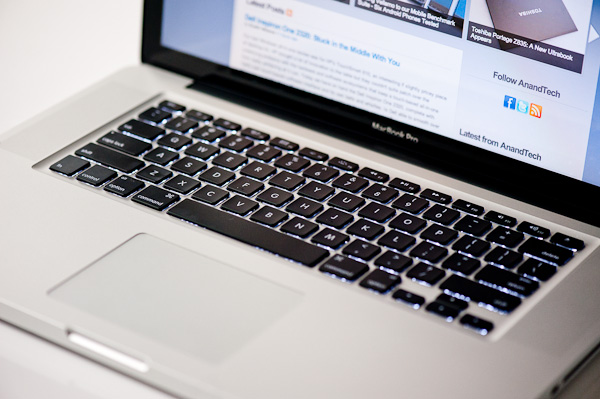








101 Comments
View All Comments
james.jwb - Friday, November 18, 2011 - link
Yep.Big audience here where some (read: most) stay out of the silliness and others only take part in the silliness. The Mac reviews--just like PS3 vs Xbox, COD vs BF3--attracts a certain type of.... weird individual that needs to rethink a few things about their deep emotional attachment to little boxes with plugs, in my opinion.
I don't blame some for defending their positions when attacked by these crazy, biased people, because it's quite annoying and borderline trolling, and sometimes it's hard not to let loose and troll a troll back.
But to grown ups it reads as tiresomely embarrassing drivel and just looks like there is something wrong with some people, which is likely.
ananduser - Sunday, November 20, 2011 - link
This is(was) a site for tech enthusiasts. They traditionally are against pre-configured machines and more into the hardware side of things. Apple reviews are fine but the mac users that comment on those Apple related articles, more often that not, do not address the tech side of that said Apple machine. They are almost always something like "...which is why Apple will always win against..." or "...why cant other brand makers do this...".freespace303 - Friday, November 18, 2011 - link
No 6770m benches for us windows gaming lovers eh? :(I would love to see how this laptop handles BF3 and Skyrim.
KoolAidMan1 - Friday, November 18, 2011 - link
Same, I'd love to see how the 6770m compared with the 6750m.Death666Angel - Friday, November 18, 2011 - link
"My current setup is a Samsung 830 in the primary drive bay and an Intel SSD 510 in place of my optical drive"You are such an SSD hog! Most people are still finding it hard to put one SSD in their case because of the prices. :D
Otherwise, good read.
Torrijos - Friday, November 18, 2011 - link
Anand should really try to review Mac Hardware with a bunch of Windows benchmark too, just to gage where they sit compared to the windows crowd, reducing OS & software optimization influence on the measures.This would be particularly interesting with the advent of the ultrabook where the MBA seems to be the reference but doesn't show up in any of the charts of the ultrabook reviews.
This would also reduce speculation on hardware performance benchmarks the only nagging point remaining would be the drivers given by Apple.
Death666Angel - Friday, November 18, 2011 - link
I agree! While I am unfortunately not in the market for such a thing while I'm still a student (another year or two), some of the MBPs do look nice and offer good performance. But I would not use OSX with them. So a comparison with bootcamp Windows would be appreciated. :-)KoolAidMan1 - Friday, November 18, 2011 - link
1:1 comparisons in the past have yielded consistent results in terms of battery life and game performance. Windows gets less battery life along with better game performance, the latter due to GPU drivers from vendors being much more optimized than the OpenGL drivers Apple puts out themselves. There were several updates from Apple last year when Valve ported Source games to OS X that yielded very good improvement, but it's still generally not as good as DirectX performance in Windows. There are a few exceptions like WoW, but then you have games like Starcraft 2 where the differences seem to swing wildly depending on the version number.Doesn't affect me much personally, I segregate work to my OS X machine and play to my Windows box. :)
ananduser - Friday, November 18, 2011 - link
Load of bull. DirectX and OpenGL performance in Windows is a no contest compared to Apple's. It all amounts to Apple's shitty bootcamp. Apple's drivers for Windows don't use the integrated graphics at all - they just turn on (and leave on) the discrete GPU - even if your machine doesn't need the graphics horsepower - hence the battery penalty. Apple also only provides Windows IO drivers that make the HDD subsystem look like an old IDE drive, reducing IO bandwidth and increasing IO latency considerably. Legacy IDE mode hinders the performance of all disk IO.KoolAidMan1 - Friday, November 18, 2011 - link
Yes, I'm fully aware that those are reasons for Windows performance having less battery life than OS X. That said, I didn't go into that, instead focusing on differences in graphics performance (Windows DX drivers are more optimized than OS X OGL drivers) which we do agree one, even though your response makes it seem like we don't.The one thing you do need to consider is Anandtech's battery tests on Macbooks without dedicated graphics. Even with an integrated GPU, battery life is more with OS X. Furthermore, Boot Camp battery life is roughly in line with other notebooks running identical specs: http://www.anandtech.com/show/2645/13
Why are you so mad? These aren't major disagreements we're having.